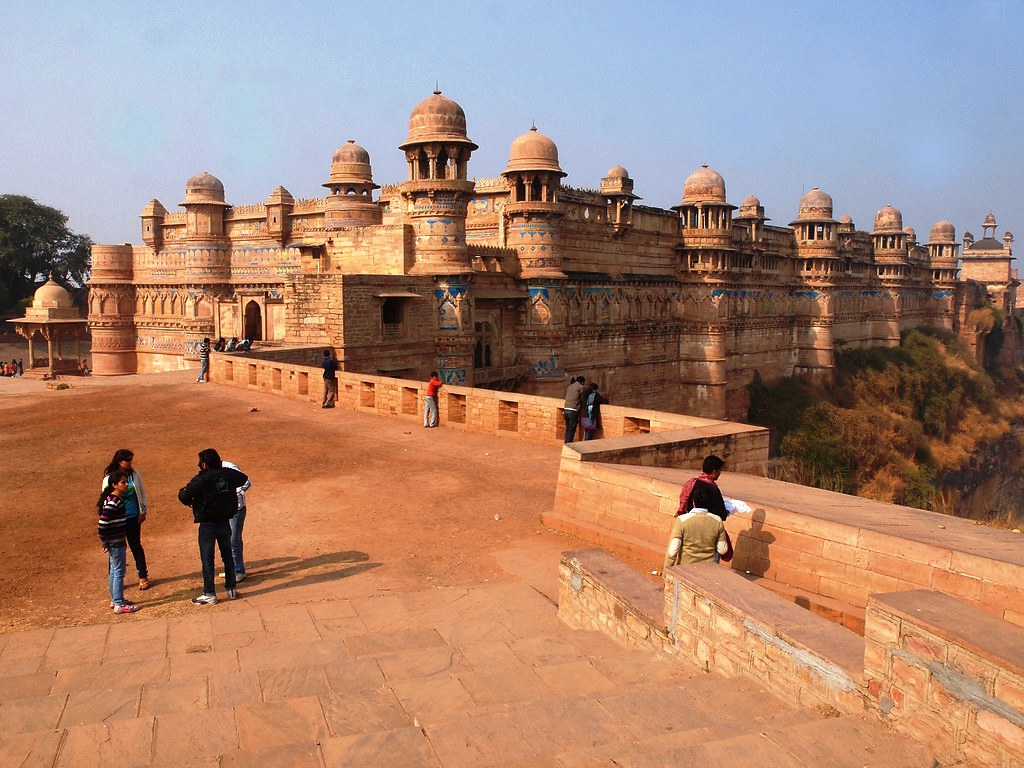The Gwalior fort built of red sandstone on a hill called Gopanchal in Gwalior city of Madhya Pradesh, about 3 square kilometers, has been a direct witness to the ups and downs of Indian politics.
This fort, built in a narrow place on the Gopgiri hill, was once one of the most beautiful forts in India. For this reason, this beautiful fort is called the fort of pearls.
History of Gwalior Fort
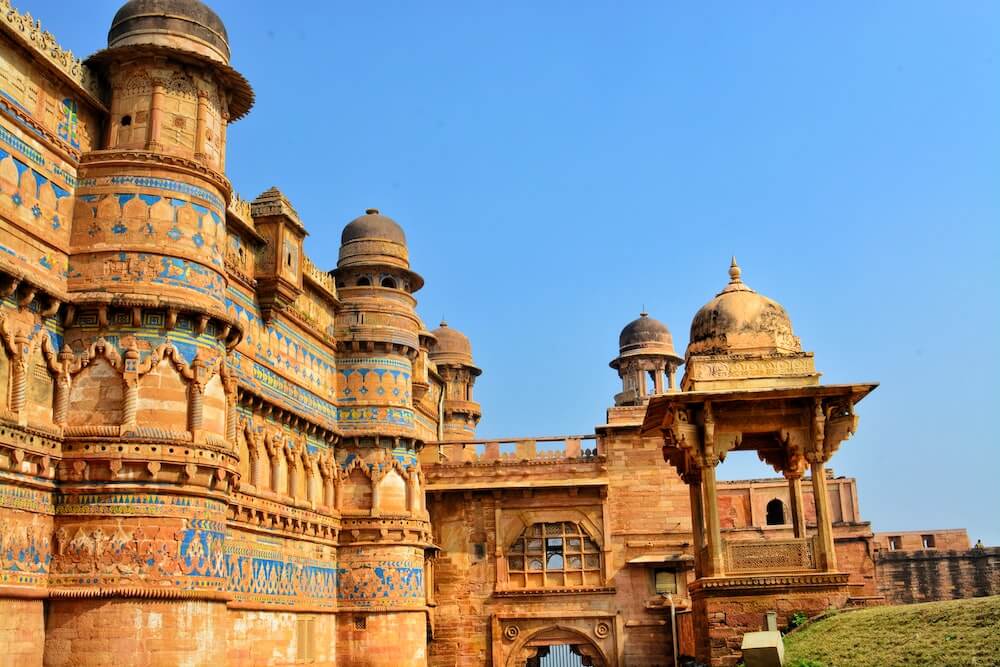
The fort of Gwalior has seen in a big way touching the height and success of kings and attackers, this fort has seen the rule of many Hindu clans, Turks, Afghans and Mughals, Marathas, and British, which hardly any other fort has seen.
After the establishment of the Gwalior fort, the kings of the Pal dynasty ruled here till about 989 AD, after that it remained the king of the kings of the Pratihar dynasty.
History tells that Ghazni attacked this fort of Gwalior here in 1023 AD, but returned after being defeated at that time.
After a long siege in 1196 AD, Qutubuddin Aibak won the Gwalior fort, after which there was another battle here in 1211 AD and this time Qutubuddin had to face defeat.
In 1231 AD, King Iltutmis of the Shamshi dynasty took this fort of Gwalior under his control. Then such a historic time came in this fort of Gwalior when in 1409 AD Maharaj Devbram established the Tomar dynasty in this fort of Gwalior.
Raja Mansingh Tomar became the famous ruler of this dynasty. And from 1486 to 1516 AD, Raja Mansingh ruled in this fort.
It is said that between 1804 and 1844, this fort remained under the control of the British and Scindia Rajbansho, however, in January 1844, this fort was completely under the control of Scindia Rajbansho after Maharaj Pur Kildayi.
After Jhansi was snatched from the hands of the British, Rani Lakshmi left Gwalior and came here and sought refuge from the kingdoms of the Scindia dynasty, but they clearly refused to help in any way.
On June 1, 1858, Jhansi’s Rani Lakshmi Bayan, along with the Maratha rebellion, captured it. After the capture of Lakshmi Bayan (15 days later), on June 16, 1858, under the leadership of General Hirose, the British soldiers in Gwalior fort Dhaba has been called.
It is said that Rani Lakshmi fought a lot in this fort, but in the end, she died due to the bullet of British. And the British captured the Gwalior fort.
In the last days of the 18th century, Maratha Sindhis took over the power, during their rule, Gwalior was spread over 60 thousand square kilometers.
The Gwalior fort remained a British post till India’s independence, but there is no concrete information about when it was built, it only depends on the stories of the dead.
It is said that initially cave temples of Jainism were built in Gwalior fort between the 7th century and 15th century. One of the many idols made of stone is the huge 58 feet tall statue of Adinath, the first Tirthankara of Jainism.
- This fort of Gwalior was built in 700 AD by the local Sardar Surya Sen living in a village called Singhania, 22 km from Gwalior city.
- The fort of Gwalior is a fine example of ancient carvings.
- The recorded history of Gwalior Fort is believed to be around 1300 years old.
- Gwalior Fort is counted among the most beautiful historical heritage of India.
- It is about 2.5 km long and 1 km wide.
- After the establishment of the fort, the kingdoms of the Pal dynasty ruled here till about 900 AD, after that the kingdoms of the Pratihara dynasty ruled here.
This battle is famous in history as the Battle of Gwalior where the fort of Gwalior has seen its brave sons being martyred.
Who built the Gwalior fort and when?
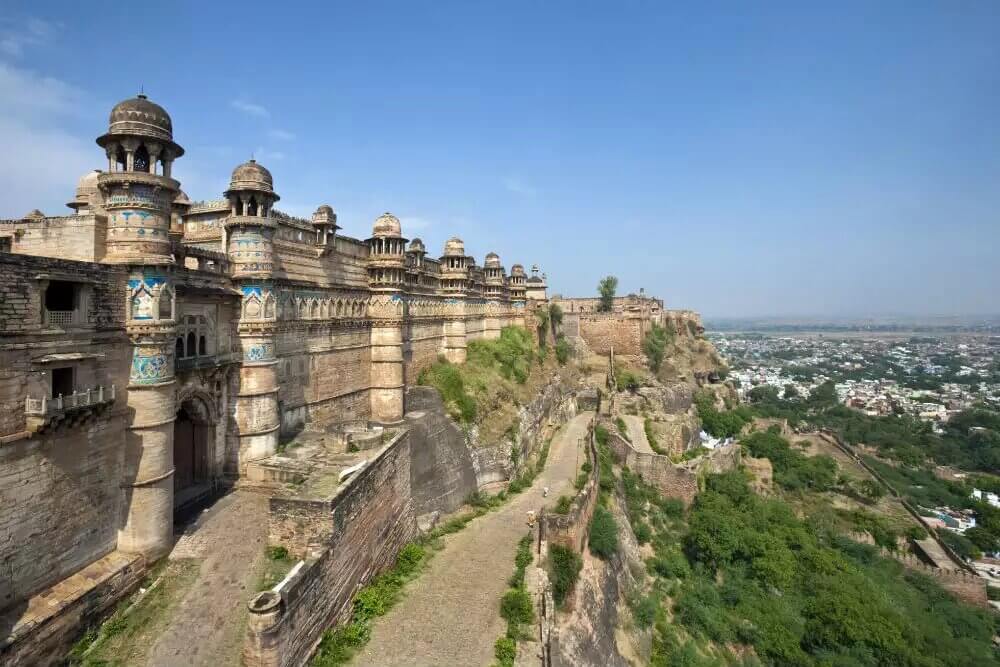
This fort of Gwalior was built in 700 AD by the local Sardar Surya Sen, who lived in a village called Singhonia, 22 km from Gwalior city. There is no concrete information about when the Gwalior fort was built, it only depends on the imagination and stories of the dead.
If you are interested in turning the pages of history, then you must visit this grand fort of Gwalior. You will definitely like the texture and artwork of this fort and will make you think that how such a beautiful grand building would have been built in those times.
How to reach Gwalior Fort?
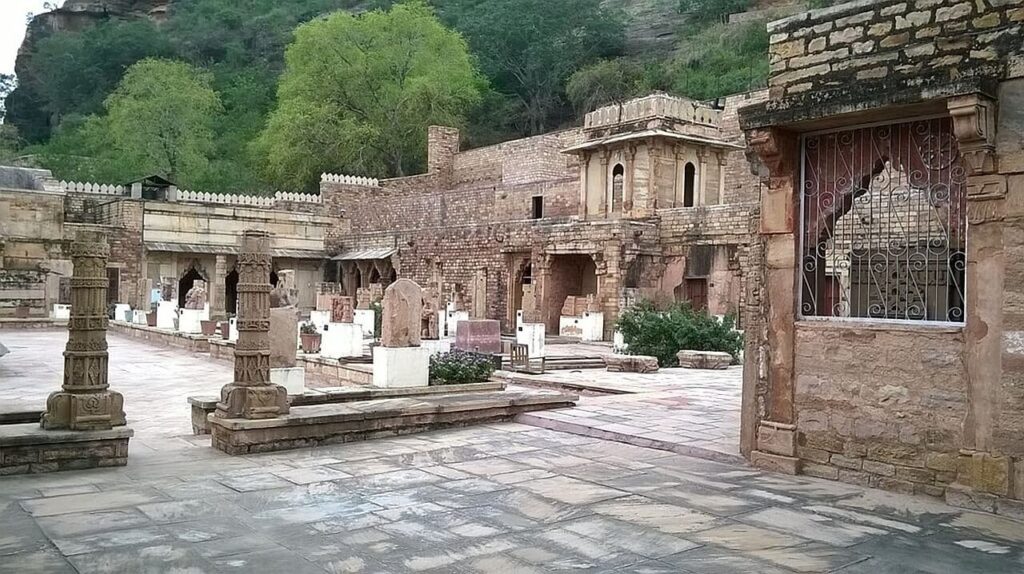
Gwalior Fort – There are 2 ways to reach – Urwai Gate and Gujari Mahal, out of these I would recommend you to go through urwai gate because you have to walk from Gujari Mahal to reach the fort. But from Urwai Gate you will directly enter the fort.
The outer walls of the Gwalior Fort decorated with enamel work are the best examples of Hindu architecture. This way leading to the old city from under the huge entrance is called the Gwalior Gate, from where Maharaja Mansingh used to ride on an elephant.
Passing through the corridors of small stairs in the fort, the tourists reach the upper part of the fort, from where they get a spectacular view of the entire Gwalior City, which attracts visitors to the fort of Gwalior.
Places to visit in Gwalior Fort
Mansingh Palace and Man Mandir built during the time of Raja Mansingh are the main attractions of this beautiful fort of Gwalior.
But apart from this, there are many other places to visit inside the Gwalior fort, where tourists come here throughout the year to admire the beauty of this historical heritage of India. It may take you a maximum of 2 hours to visit Gwalior Fort.
1. Mansingh Palace Gwalior
The fort of Gwalior has many secrets hidden inside it, among the palaces built here, Man Mandir Palace is famous for its tile work and excellent carvings.
Raja Mansingh had 9 queens, out of which 8 queens were Rajputs who lived in this palace and the 9th queen was Gurjar, whose name was Mriganaini, who had become a murderer in front of her beauty, Raja Mansingh and had sent the message of marriage.
After marrying Mrignaini, a special palace, Gujari Mahal, was built for him, which falls at the foothills of the Gwalior Fort.
2. Man Mandir Palace
The Mansingh Temple, located at the other end of the Mansingh Palace gate, was built by King Mansingh Tomar, at that time it used to be a huge Shiva temple, but after the arrival of the Mughals, the temple was destroyed.
3. Gujri Mahal and Museum
Many palaces were built under the rule of Raja Mansingh Tomar, one of them Gujari Mahal, which is built in the Talpati of Gwalior Fort, the main reason for the construction of Gujari Mahal, Mansingh’s 9th queen Mrignaini, from whom Tomar Bamboo Raja Mansingh of Gwalior married Love. did. Gujari Mahal was specially built for him.
But now Madhya Pradesh Tourism has converted this palace into a museum where tourists get to know and see the entire history of Gwalior Fort.
4. Jauhar Kund Gwalior
When the Mughals invaded this fort of Gwalior under the rule of the Tomar dynasty, the Rajputs came out of the fort wearing saffron-colored turbans and attacked the enemies. But the Rajputs had to face defeat in the war.
Inside the fort, when the queens got the information that the king had attained Veergati in the war, then to escape from the Mughals, they lit the flame of fire in the pool along with all the queens and dasiyas and surrendered themselves in that burning fire.
Then this fort of Gwalior once again lost its brave sons and the women of the Hindu clan, by doing Jauhar, made the coming generations aware of the customs and customs of that time and being a Hindu, that they should not live with any other man except their husband. Can
5. Vikram Mahal
Built by Vikramaditya, son of King Mansingh, this fort is very beautiful and a Shiva temple is also present in the inner part of this palace. Where tourists go for darshan.
6. Keshar Kund Gwalior Fort
This kund was built for the bath of the queens of Gwalior, in which saffron was added to the clean and beautiful clean water for the queens to bathe, hence it is called Kesar Kund.
7. Saas Bahu Temple Gwalior
The name of this temple sounds a bit strange, but just like its name, its history is also very interesting. About 1000 years ago, in 1093 AD, this temple was established by King Mahipal Singh.
King Mahipal’s mother used to be a worshiper of Lord Vishnu and this temple was built in 1093 AD for her worship.
And King Mahipal’s wife used to be a worshiper of Lord Shiva and another temple was built for her worship which is right in front of this temple.
The name of Saas Bahu Temple is mainly due to the description of Sahasra Bahu Mandir in the entire incarnation of Lord Vishnu, this temple of Gwalior was called Sahasra Bahu Temple, but later the literal meaning Saas Bahu became very popular, due to which this temple got its name. Mother-in-law and daughter-in-law fell.
8. Teli Ka Mandir Gwalior
The high peak Bala Teli temple is very famous for its beautiful architecture and mesmerizing different architecture. It is said that it was established between the 8th and 9th century.
At that time this temple must have been a Hindu religious place. This temple built in Hindu and Buddhist style is built in the Dravidian style of South India, in which the height of Teli’s temple is about 100 feet.
This temple made with carving art attracts a lot of tourists coming to Gwalior. Do not forget to visit this temple of Teli during your visit to Gwalior Fort.
9. Temple of zero – Temple of zero Gwalior
The temple of zero falls on the ascent of the main gate of the fort of Gwalior. The design of zero is first seen in this carved temple built in the 9th century.
On this temple of Nagbans, for the first time, the proof of writing of numeric zero is found on the stone and this zero is the form of zero of the present.
Today , history and memorable things are hidden in the fort of Gwalior, to know them it is very important to visit Gwalior.
10. Karna Mahal Gwalior
Another magnificent palace inside the Gwalior fort was built around 1480 to 1486 by Kirti Singh, the second ruler of the Tomar dynasty.
All the palaces and forts located in Gwalior Fort are a wonderful carving aspect of the ancient history of the present, which in today’s modern times, we see the mirror of how much we humans have left behind in the era of science.
11. Jahangir and Shahjahan Palace Gwalior
This palace located inside the Gwalior fort is a sample of one of the best architecture of the Mughals, after coming here the time of tourists stops. It was built by Shah Jahan.
12. Jai Vilas Palace Museum Gwalior
Although there are many places to visit in Gwalior, but there is such a great place in Gwalior that you should not miss at all, otherwise your trip to Gwalior can be incomplete.
The beautiful palace was built by Jaiji Rao Scindia in 1874, after that in 1964, Jivaji Rao converted 8 parts of it into a museum.
Since then this place has become very famous in Gwalior as a tourist destination, which means that it is impossible to come to Gwalior and not visit Jai Vilas Palace.
Here you will get to see the royal style of the forefathers of the Scindia family and their lifestyle which is far ahead of today’s modern times.
13. Tansen’s Tomb
In the history of Hindustani music literature, Tansen was such a great singer that a war broke out between two states to include him in his collection.
Although Gwalior is a city of historical heritage, there are many historical buildings at a little distance, the most famous of these is the Gwalior Fort and Jai Vilas Palace, but in the middle of all these, Tansen’s tomb is away from the crowd of the city.
Considering Swami Haridas ji as his first teacher, Tansen ji started singing at the age of just 6 years. Who hoisted the flag of music all over India?
With his encouragement, Gwalior used to be a major center of singing where music artist singers like Baiju Babra, Karna, and Mehmood were present.
Even today, Shailani comes to Gwalior to listen to the echoes of Tansen’s music in this building built in the sixteenth century, where the memories of the Indian man Tansen are hidden amidst the ragranios, artwork, and carvings.
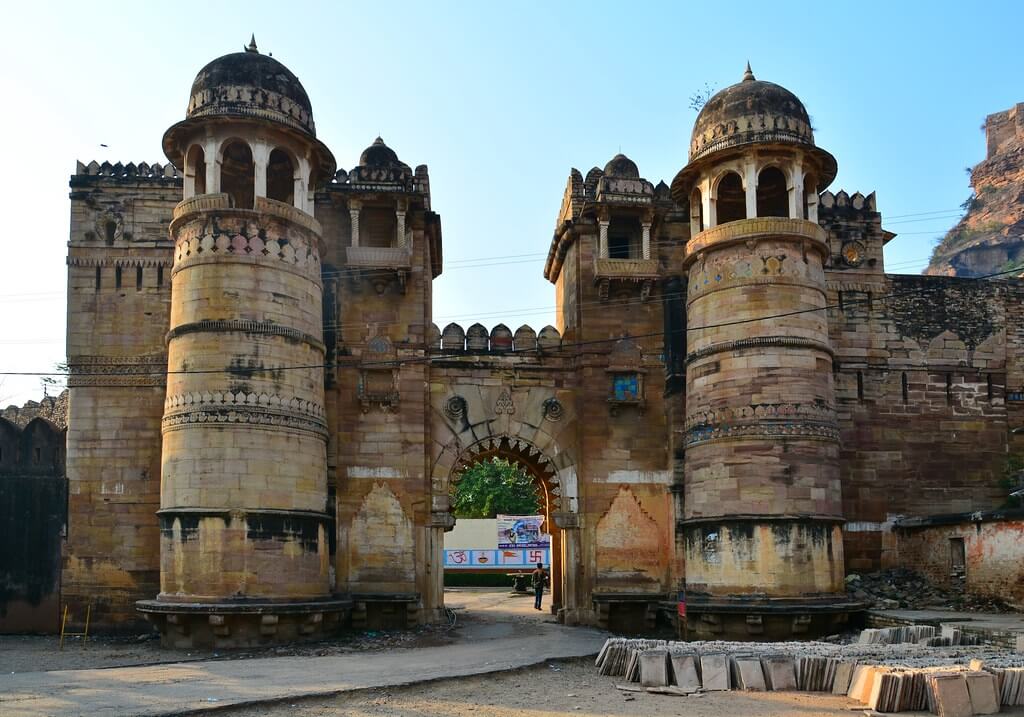
What are the opening hours of Gwalior Fort?
Gwalior Fort – It remains open 7 days a week, whose opening time remains from 9 am to 5:30 pm, so whenever you go to visit this historical heritage, pay special attention to the time.
Gwalior Fort Maze
The maze built in the Man Mandir Palace is a palace to say, but on going inside it, it is known that many corridors will be found to go, but there is only one way to come back.
How to reach Gwalior?
To travel to Gwalior, the city is well connected by buses, trains, and flights to almost all the major cities of India like Delhi, Mumbai, Chennai, Kolkata, and Hyderabad. You can choose the mode of transport at your convenience. Matra is 360 km away from Delhi on National Highway 8 on Agra Road.


